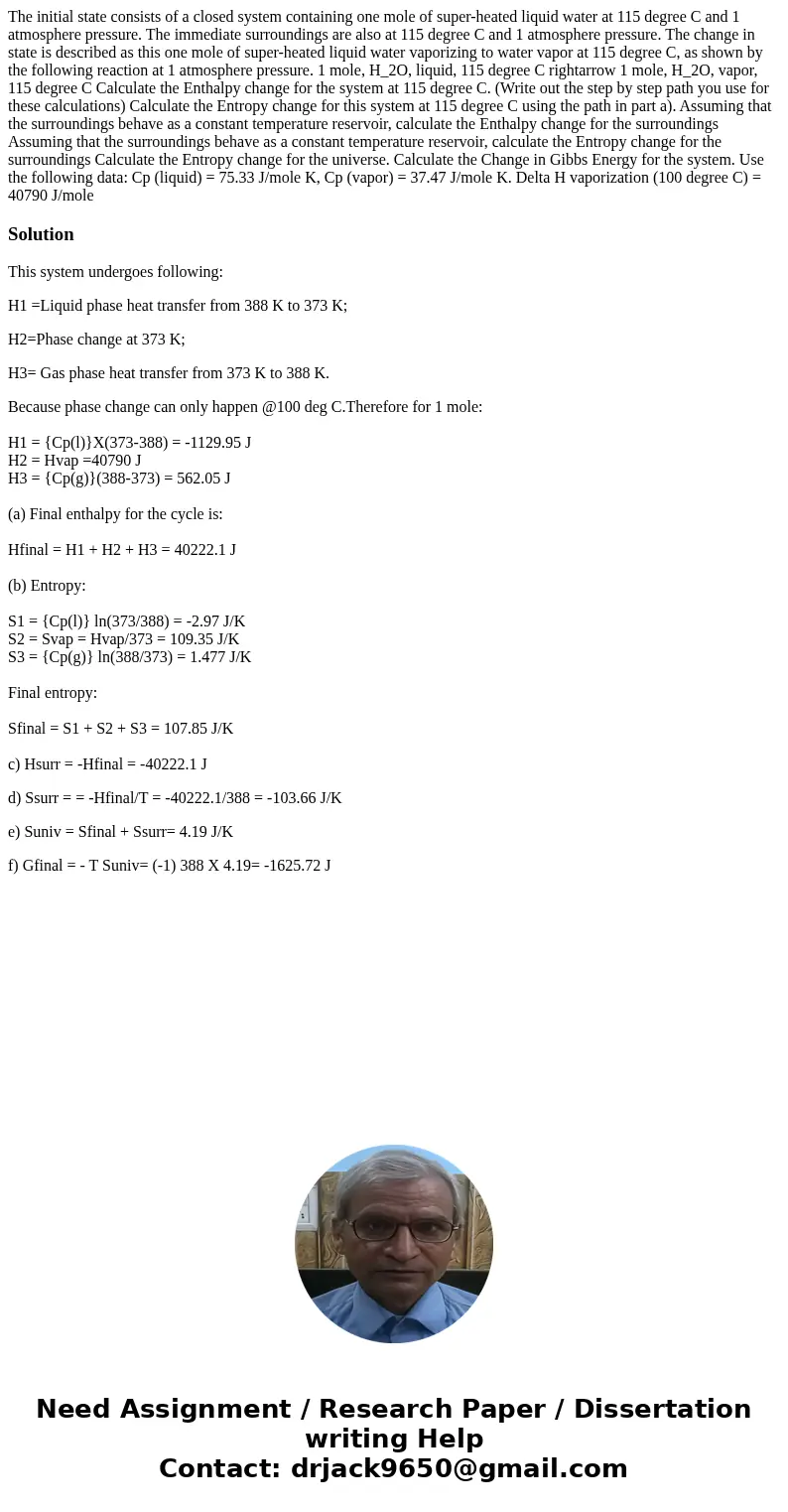The initial state consists of a closed system containing one
The initial state consists of a closed system containing one mole of super-heated liquid water at 115 degree C and 1 atmosphere pressure. The immediate surroundings are also at 115 degree C and 1 atmosphere pressure. The change in state is described as this one mole of super-heated liquid water vaporizing to water vapor at 115 degree C, as shown by the following reaction at 1 atmosphere pressure. 1 mole, H_2O, liquid, 115 degree C rightarrow 1 mole, H_2O, vapor, 115 degree C Calculate the Enthalpy change for the system at 115 degree C. (Write out the step by step path you use for these calculations) Calculate the Entropy change for this system at 115 degree C using the path in part a). Assuming that the surroundings behave as a constant temperature reservoir, calculate the Enthalpy change for the surroundings Assuming that the surroundings behave as a constant temperature reservoir, calculate the Entropy change for the surroundings Calculate the Entropy change for the universe. Calculate the Change in Gibbs Energy for the system. Use the following data: Cp (liquid) = 75.33 J/mole K, Cp (vapor) = 37.47 J/mole K. Delta H vaporization (100 degree C) = 40790 J/mole
Solution
This system undergoes following:
H1 =Liquid phase heat transfer from 388 K to 373 K;
H2=Phase change at 373 K;
H3= Gas phase heat transfer from 373 K to 388 K.
Because phase change can only happen @100 deg C.Therefore for 1 mole:
H1 = {Cp(l)}X(373-388) = -1129.95 J
H2 = Hvap =40790 J
H3 = {Cp(g)}(388-373) = 562.05 J
(a) Final enthalpy for the cycle is:
Hfinal = H1 + H2 + H3 = 40222.1 J
(b) Entropy:
S1 = {Cp(l)} ln(373/388) = -2.97 J/K
S2 = Svap = Hvap/373 = 109.35 J/K
S3 = {Cp(g)} ln(388/373) = 1.477 J/K
Final entropy:
Sfinal = S1 + S2 + S3 = 107.85 J/K
c) Hsurr = -Hfinal = -40222.1 J
d) Ssurr = = -Hfinal/T = -40222.1/388 = -103.66 J/K
e) Suniv = Sfinal + Ssurr= 4.19 J/K
f) Gfinal = - T Suniv= (-1) 388 X 4.19= -1625.72 J

 Homework Sourse
Homework Sourse